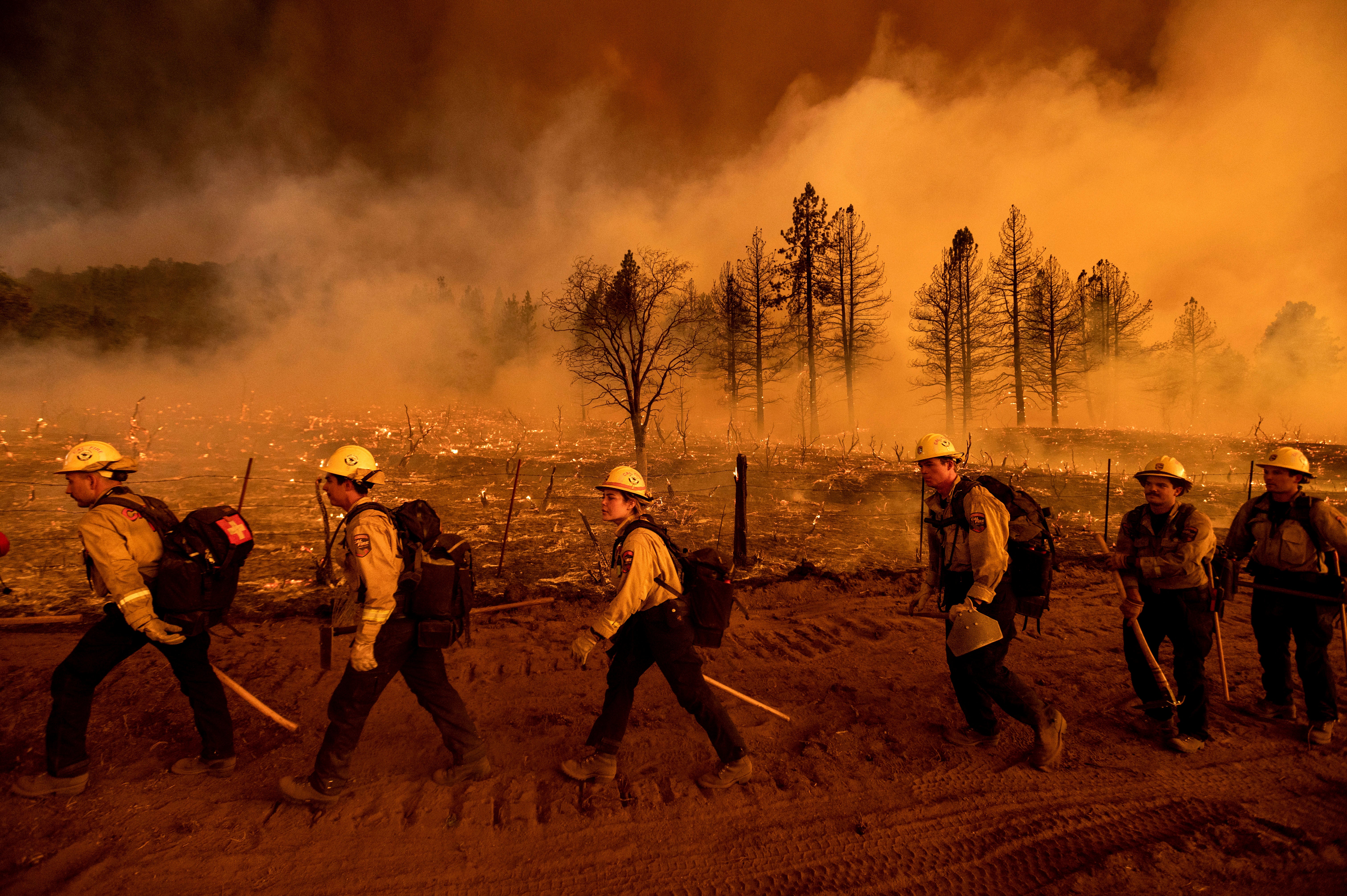What is wildfire season and why is it so bad?
California has been ravaged by a series of wildfires over the past two to three years. Here’s what you need to know.

Your support helps us to tell the story
This election is still a dead heat, according to most polls. In a fight with such wafer-thin margins, we need reporters on the ground talking to the people Trump and Harris are courting. Your support allows us to keep sending journalists to the story.
The Independent is trusted by 27 million Americans from across the entire political spectrum every month. Unlike many other quality news outlets, we choose not to lock you out of our reporting and analysis with paywalls. But quality journalism must still be paid for.
Help us keep bring these critical stories to light. Your support makes all the difference.
Wildfires have, unfortunately, maintained a heavy presence in the news cycle in recent years. Violent waves of flame that can spread at up to 14 miles per hour in grasslands, wildfires have spent the last couple of decades turning from occupational hazard to looming environmental catastrophe.
From Mexico all the way up the coast of the US, and onwards into Canada the North American west has been suffocated by a series of disastrous conflagrations that have made news channels across the world.
The region does have a ‘wildfire season’ every year – historically stretching from May until around October – but recently the fires have been burning brighter and longer year on year.
2020 was particularly dreadful. In the United States alone 10.1 million acres of land burned away into ash – 4.2 million of them in California – breaking state records and killing more than 30 people. You may have seen harrowing reports of skyscraper-sized flames and impenetrable fumes obscuring the sky.
Outside North America, Australia has perhaps been the worst-hit. Uncontrolled bushfires ravaged vast swathes of the country through 2019 and 2020, claiming at least 33 lives, more than 3,000 homes and an estimated billion animals. 2021 so far has been more merciful, as a cool, wet summer offered respite from the hazardous heat and drought.
Unfortunately, America’s 2021 does not look so promising. The west coast has already endured record temperatures – with hottest-place-on-Earth Death Valley notching a possible world record 54.4C over the weekend – putting rural communities and fire services on high alert.
About 1.8 million acres have already been scorched to cinders – more than at this stage last year – and concerned experts are predicting another possibly record-breaking year.
What causes wildfires?
Wildfires rarely have singular, definable causes, and often owe as much to the conditions as to their triggers. Known as ‘the fire triangle’, a wildfire requires three things to burn: fuel, oxygen, and a heat source. Trees grasses and brush provide ample fuel, particularly in arid conditions, while California’s strong Santa Ana winds can help wildfires spread exponentially.
High heat, dry wind, and intense drought can turn the most innocuous hillside into a tinderbox, but the fire still needs someone to strike the match, and between 85 and 90% of wildfires are started by human hands. Discarded cigarettes, unattended campfires, and deliberate arson can be culprits, and it doesn’t take much to provide the spark.
In September 2020, a Californian gender reveal party went viral when a “smoke-generating pyrotechnic device” started a wildfire that burned down more than 7,000 acres. Lightning strikes can also set the ball rolling, as can technological mishaps like downed power lines.
Why are they getting worse?
Since records began in the 1980s, fires have grown consistently in number and ferocity, and the last two years are at the crest of a worrying trend.
It is hard to conclusively prove a direct link between individual events and climate change, but there’s no doubt it’s the elephant in the room. A recent report by 27 climate researchers at the World Weather Attribution network stated that June’s North American heatwave would have been “virtually impossible” without climate change, and predict more record-breaking weather patterns to come.
Warmer temperatures, harder-hitting droughts, and drier vegetation all create wildfire-friendly conditions, and are all known consequences of climate change. It is difficult to see how climate change could not be a factor.
Elsewhere the American property market has increased the impact of wildfires, if not the potency of the fires themselves. According to a recent study, nearly 59 million homes now lie within a kilometre of land that has been ravaged by wildfires in recent years.